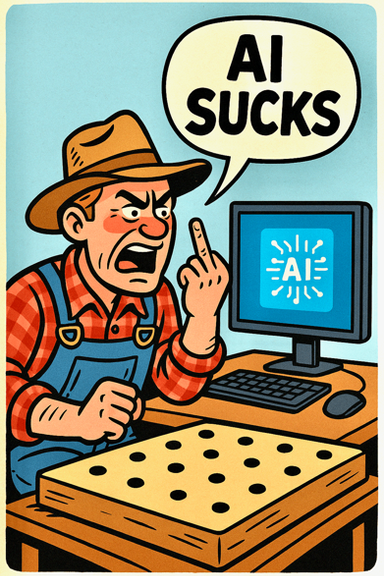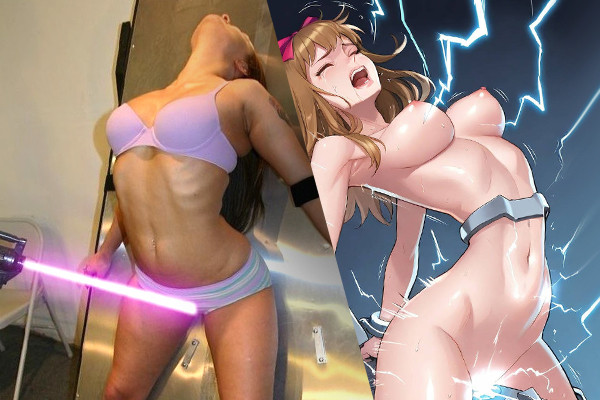HOME | DD
 prachi123456 — How To Monetize Youtube Channel?
prachi123456 — How To Monetize Youtube Channel?

#youtube #monetization #youtubevideo #youtubechannel
Published: 2023-09-06 07:27:15 +0000 UTC; Views: 543; Favourites: 0; Downloads: 0
Redirect to original
Description
YouTube monetization is about how YouTubers, the creators of content, on YouTube make money from their videos. They mainly earn through ads that are shown in their videos. Let me break it down for you;
Ad Revenue: Content creators on YouTube have the option to monetize their videos by enabling ads. When viewers watch these videos they may come across ads that appear before, during or after the content. Advertisers pay YouTube for these ad placements and a part of that revenue is then shared with the creators of the content.
Google AdSense: To participate in YouTube monetization, creators need to connect their YouTube channel to a Google AdSense account. AdSense is a program by Google that allows publishers (in this case, YouTubers) to earn money from ads on their content.
Eligibility Requirements: Not every YouTube channel can be monetized. YouTube has established criteria that channels must meet in order to enable monetization. These requirements often include having a minimum of 1,000 subscribers and accumulating at least 4,000 watch hours within the 12 months. Additionally channels are required to adhere to the policies and guidelines set by YouTube.
Ad Types: YouTube offers various ad formats, including:
Pre-roll Ads: These are ads that play before the video starts.
Mid-roll Ads: These ads appear during the video at specified points.
Post-roll Ads: These ads play after the video content.
Overlay Ads: These are semi-transparent ads that appear on the lower portion of the video.
Display Ads: These are banner ads that appear beside the video.
Ad Revenue Split: YouTube typically shares ad revenue with content creators, with creators receiving a percentage of the revenue generated by ads shown on their videos. The exact split varies but is usually around 55% for creators and 45% for YouTube.
Monetization Policies; As a creator it is important to follow YouTubes guidelines regarding monetization. These guidelines cover aspects such as content quality, copyright compliance creating advertiser content and more. Failure to comply with these policies may lead to demonetization or other penalties.
Alternative Revenue Streams; Apart from earning revenue through ads many YouTubers explore avenues for monetizing their channels. This can include options, like offering channel memberships selling merchandise collaborating on sponsored content or participating in affiliate marketing programs.
Payment Process; YouTube ensures that creators receive their earnings by making payments through their AdSense accounts. Payments are usually made on a basis once the minimum payout threshold ( $100) has been reached.
Monetization on YouTube has provided many content creators with the opportunity to turn their passion into a source of income. However, it's important to note that building a successful channel and generating substantial ad revenue often requires consistent effort, a dedicated audience, and adherence to YouTube's policies and guidelines.
Are you interested in starting or scaling a YouTube channel, without having to show your face or becoming a traditional YouTuber? JOIN TUBE MASTERY AND MONETIZATION Where you can grow your youtube channel We "Help anyone, anywhere, no matter your experience, start & grow a successful YouTube business"
YouTube Channel Monetization Policies
YouTube has guidelines for monetization that creators need to follow in order to enable ads on their videos and make money from their YouTube channels. These guidelines aim to create an advertiser friendly environment for both viewers and advertisers. Here are some of the policies, in place;
Content Guidelines:
Creators must follow YouTube's Community Guidelines and Content Policies. Content that violates these guidelines is typically not eligible for monetization.
Inappropriate, harmful, or hateful content, including hate speech, harassment, violence, and controversial or sensitive topics, may be demonetized or removed.
Misleading or clickbait content designed to deceive viewers is not allowed.
Copyright Compliance:
Creators must respect copyright laws and guidelines. Using copyrighted material without proper authorization or fair use justification can lead to demonetization or copyright strikes.
Using copyrighted music, video clips, or other content without proper licenses can result in demonetization or content takedowns.
Reused Content:
Channels that primarily upload content reused from other sources (e.g., repurposed content, public domain content) without adding significant original commentary or value may not be eligible for monetization.
Creators are encouraged to add their unique perspective, insights, or commentary to content they share.
Channel and Video Quality:
Channels and videos must meet certain quality standards to be eligible for monetization.
Creators should ensure that their content is well-produced, free of excessive errors, and provides value to viewers.
Repeated violations of YouTube's quality standards can result in demonetization.
Ad-Friendly Content:
Content should be advertiser-friendly. This means avoiding sensitive or controversial topics, graphic violence, and excessive use of profanity or sexual content.
YouTube uses automated systems to assess content for ad suitability, and videos that are deemed not suitable for advertisers may be demonetized.
Channel Eligibility Requirements:
To enable monetization, channels must meet certain eligibility requirements, including having at least 1,000 subscribers and 4,000 watch hours in the past 12 months.
Channels must also comply with all of YouTube's policies and guidelines.
Abiding by Advertiser Policies:
Creators must respect advertiser policies. Content that violates these policies may be demonetized.
Advertiser policies include restrictions on sensitive content, illegal activities, and more.
Engagement Manipulation:
Creators should not engage in activities that artificially boost engagement metrics, such as view count, likes, comments, or shares. These activities can lead to demonetization.
Transparency and Disclosure:
Creators must be transparent and disclose any sponsored or paid content in their videos. Failure to do so can result in demonetization or penalties.
Appeals and Review:
Creators have the option to request manual reviews for videos that are demonetized due to content concerns.
YouTube provides a process for creators to appeal content decisions.
It's crucial for YouTubers to familiarize themselves with these monetization policies and ensure that their content aligns with YouTube's guidelines. Violations of these policies can result in demonetization, loss of revenue, or other actions taken against the channel. Creators should prioritize creating high-quality, respectful, and engaging content to maintain a healthy and monetizable channel.
The Top 10 Ways to Monetize on YouTube
Monetizing on YouTube can be a rewarding endeavor for content creators. Here are the top 10 ways to monetize on YouTube:
Ad Revenue (YouTube Partner Program): Enroll in the YouTube Partner Program (YPP) once you meet the eligibility requirements (1,000 subscribers and 4,000 watch hours in the past 12 months). You can earn money from ads displayed on your videos. Revenue is shared between you and YouTube.
Channel Memberships: If you have a loyal fan base, you can offer channel memberships. Viewers pay a monthly fee to become members and gain access to exclusive perks like badges, emojis, and members-only content.
Merchandise Shelf: Use the merchandise shelf feature to sell your own merchandise, such as branded clothing, accessories, or products, directly from your YouTube channel.
Super Chat and Super Stickers: During live streams, viewers can purchase Super Chat messages or Super Stickers, which highlight their messages and support your channel financially.
Sponsored Content: Collaborate with brands for sponsored content. Companies pay you to create videos featuring their products or services. Make sure to disclose sponsored content to maintain transparency with your audience.
Affiliate Marketing: Promote products or services in your videos and include affiliate links in the video description. You earn a commission for every sale generated through your affiliate links.
Crowdfunding: Platforms like Patreon or Ko-fi allow you to receive direct financial support from your viewers. You can offer perks or exclusive content to your supporters.
Sell Digital Products: Create and sell digital products like e-books, presets, templates, or online courses related to your channel's niche.
Fan Funding: YouTube has a "Support" feature that enables fans to donate money directly to your channel during live streams or premieres. This is similar to a virtual tip jar.
Public Speaking and Consulting: If your channel establishes you as an expert in your niche, you can leverage your YouTube presence to secure speaking engagements or offer consulting services.
Remember, building a successful YouTube channel and monetizing it often takes time and dedication. Focus on creating high-quality content that resonates with your target audience, and be sure to adhere to YouTube's monetization policies and guidelines to maintain a healthy channel. Additionally, diversifying your income streams can provide stability and long-term financial growth as a content creator.
What to Do If the YouTube Partner Program Rejects You
If your application to the YouTube Partner Program (YPP) is rejected, it can be disheartening, but it doesn't mean the end of your YouTube journey. Here's what you can do if your YPP application is not approved:
Review YouTube's Feedback:
YouTube typically provides feedback on why your application was not approved. Pay close attention to this feedback as it can highlight areas that need improvement.
Build High-Quality Content:
Focus on creating high-quality, original, and engaging content that aligns with YouTube's policies and guidelines.
Make sure your content is unique, adds value to viewers, and does not violate copyright or community guidelines.
Increase Watch Time and Subscribers:
Work on growing your channel by increasing watch time and subscribers. This may involve creating content that resonates with your target audience and promoting your channel through social media and other platforms.
Improve Video SEO:
Optimize your video titles, descriptions, and tags to make your content more discoverable. Use relevant keywords and follow best practices for video SEO.
Engage with Your Audience:
Foster a strong community on your channel by responding to comments, engaging with viewers, and listening to feedback. Building a loyal and interactive audience can be beneficial.
Diversify Monetization Options:
While waiting for YPP eligibility, explore other monetization avenues like merchandise sales, affiliate marketing, and crowdfunding through platforms like Patreon or Ko-fi.
Resubmit Your Application:
YouTube allows you to reapply for the YPP after 30 days if your channel meets the eligibility requirements. Use this time to improve your channel and content.
Educate Yourself:
Take advantage of resources like YouTube Creator Academy and other online courses to enhance your content creation and channel management skills.
Maintain Consistency:
Consistency is key on YouTube. Keep uploading regularly and stick to a content schedule. This can help retain and attract subscribers.
Seek Feedback:
Consider seeking feedback from experienced YouTubers or joining YouTube communities where you can learn from others' experiences and receive constructive advice.
Stay Patient and Persistent:
Building a successful YouTube channel takes time and perseverance. Don't be discouraged by rejection, and keep working towards your goals.
Remember that the YouTube Partner Program is designed to reward creators who consistently produce quality content while adhering to YouTube's guidelines. Use rejection as an opportunity for growth and improvement, and continue to work towards meeting the eligibility requirements for YPP. With dedication and persistence, you can increase your chances of approval in the future.
Are you interested in starting or scaling a YouTube channel, without having to show your face or becoming a traditional YouTuber? JOIN TUBE MASTERY AND MONETIZATION Where you can grow your youtube channel We "Help anyone, anywhere, no matter your experience, start & grow a successful YouTube business"








